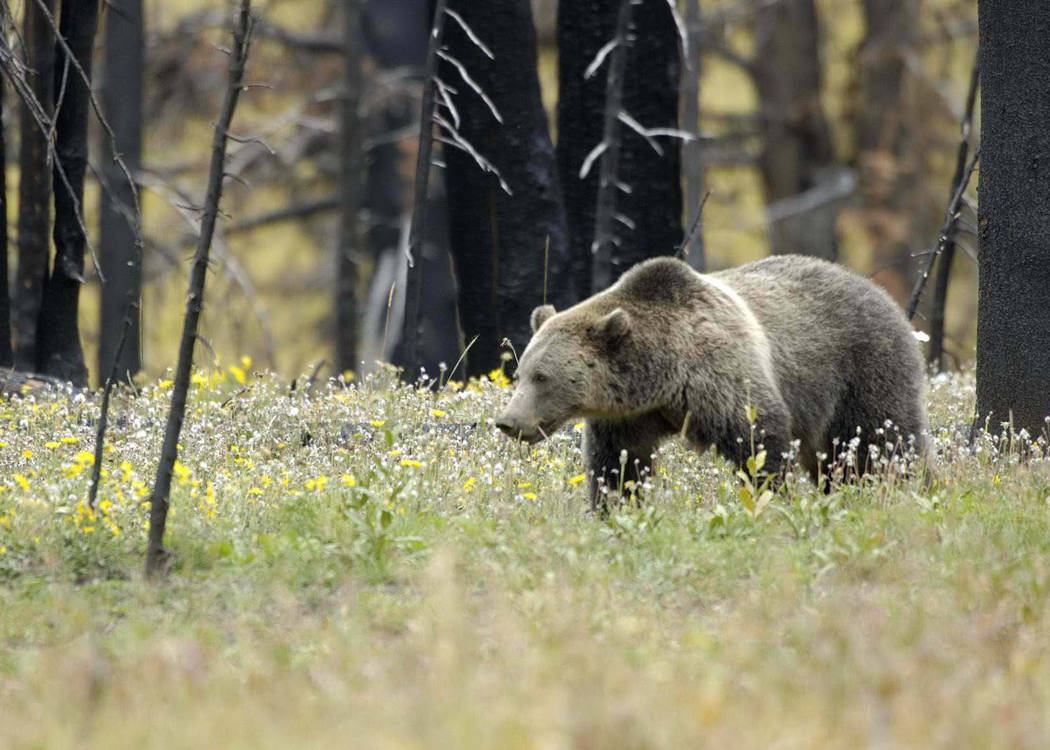Recent conflicts stem from unsecured attractants
GARDINER – Montana Fish, Wildlife & Parks staff shot and killed a grizzly bear Thursday after it had become conditioned to obtaining unsecured food attractants and breaking into houses in and around Gardiner.
On Wednesday night, FWP grizzly bear specialists and game wardens conducted a patrol with partner agencies in search of a grizzly bear that has frequented Gardiner and nearby communities. Early Thursday morning, they received a report that a bear had broken into a home in Maiden Basin, north of Gardiner. FWP staff responded and dispatched the bear while it was in the Yellowstone River. They recovered the carcass from the river Thursday afternoon and confirmed that the same bear had been involved in many recent conflicts.
Bear conflicts
Initial reported conflicts in Gardiner began in early June, with increasing frequency over the past three weeks. During that time, a grizzly bear regularly sought and obtained unsecured attractants at residences, businesses and vehicles. The attractants included garbage, human food, barbecue grills and pet food. These were stored in coolers, vehicles, camp trailers, sheds, garbage cans that were not bear resistant or unlocked bear-resistant garbage cans.
The bear also broke into several occupied residences to retrieve food, including homes in Gardiner and Maiden Basin, as well as a National Park Service employee house in Mammoth. Several property owners attempted to haze the bear, but it returned to Gardiner and surrounding areas almost nightly to obtain food.
No human injuries were reported.
FWP staff and Bear Aware Gardiner offered extensive educational outreach, working with several property owners to secure or upgrade their garbage cans or install electric fencing.
With human safety as a top priority, and in consultation with the U.S. Fish & Wildlife Service, FWP bear specialists began nightly efforts to trap and remove the bear. However, the wide availability of unsecured attractants, combined with the bear being active almost exclusively at night, limited opportunities to remove the animal without creating additional human safety risks.
These events and management efforts led to increased bear awareness in the community, an elevated patrol presence this week, and the safe removal of the habituated bear minutes after it had broken into an occupied home.
Bear specialists had collected genetic samples from the bear at several conflict locations. These samples matched a genetic profile for a known adult male grizzly bear that had been captured previously for research purposes and given a numbered ear tag. The bear killed Thursday had the same ear tag and was confirmed to be involved in the recent conflicts.
FWP would like to thank staff from the U.S. Forest Service, Yellowstone National Park, the U.S. Fish & Wildlife Service, and the U.S. Geological Survey’s Interagency Grizzly Bear Study Team for their assistance with the capture effort. FWP would also like to thank Gardiner residents who offered assistance where possible.
As residents continue their efforts to secure attractants, they will help avoid future conflicts with wildlife.
Be bear aware
Montana is bear country. Grizzly bear populations continue to become denser and more widespread in Montana, increasing the likelihood that residents and recreationists will encounter them in more places each year. People should be prepared to encounter grizzly bears in Montana, including places where grizzly bears haven’t been present for decades.
Residents, businesses and visitors are asked to store food, garbage and other attractants securely indoors or in certified bear-resistant containers. Feeding wildlife, including bears, is illegal in Montana and can lead to fines and other penalties.
Avoiding conflicts with bears is easier than dealing with such conflicts. Here are some precautions to help residents, recreationists and people who work outdoors avoid negative bear encounters:
- Carry bear spray and be prepared to use it immediately.
- Travel in groups whenever possible and make noise, which can help alert bears to your presence.
- Stay away from animal carcasses, which often attract bears.
- Watch for signs of bears such as bear scat, diggings, torn-up logs, turned-over rocks, and partly consumed animal carcasses.
- Follow food storage orders from the applicable land management agency.
- If you encounter a bear, never approach it.
- Keep garbage, bird feeders, pet food and other attractants put away in a secure building from March until December. Keep garbage in a secure building until the day it is collected. Certified bear-resistant garbage containers are available in many areas.
- Never feed wildlife. Bears that become food conditioned lose their natural foraging behavior and pose threats to human safety.
Grizzly bears in the lower 48 states are listed as threatened under the Endangered Species Act. Management authority for grizzlies rests with the U.S. Fish & Wildlife Service, working closely in Montana with FWP, the Forest Service, the National Park Service, the Bureau of Land Management, the U.S. Geological Survey, Wildlife Services, and Native American tribes. This collaboration happens through the Interagency Grizzly Bear Committee.
For more information, resources and education events on bear safety, visit fwp.mt.gov/bear-aware.




